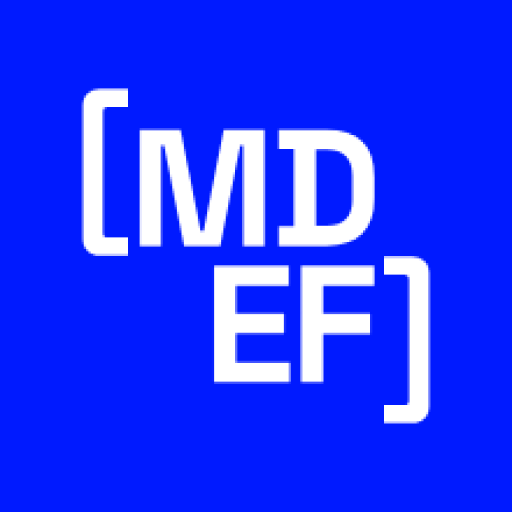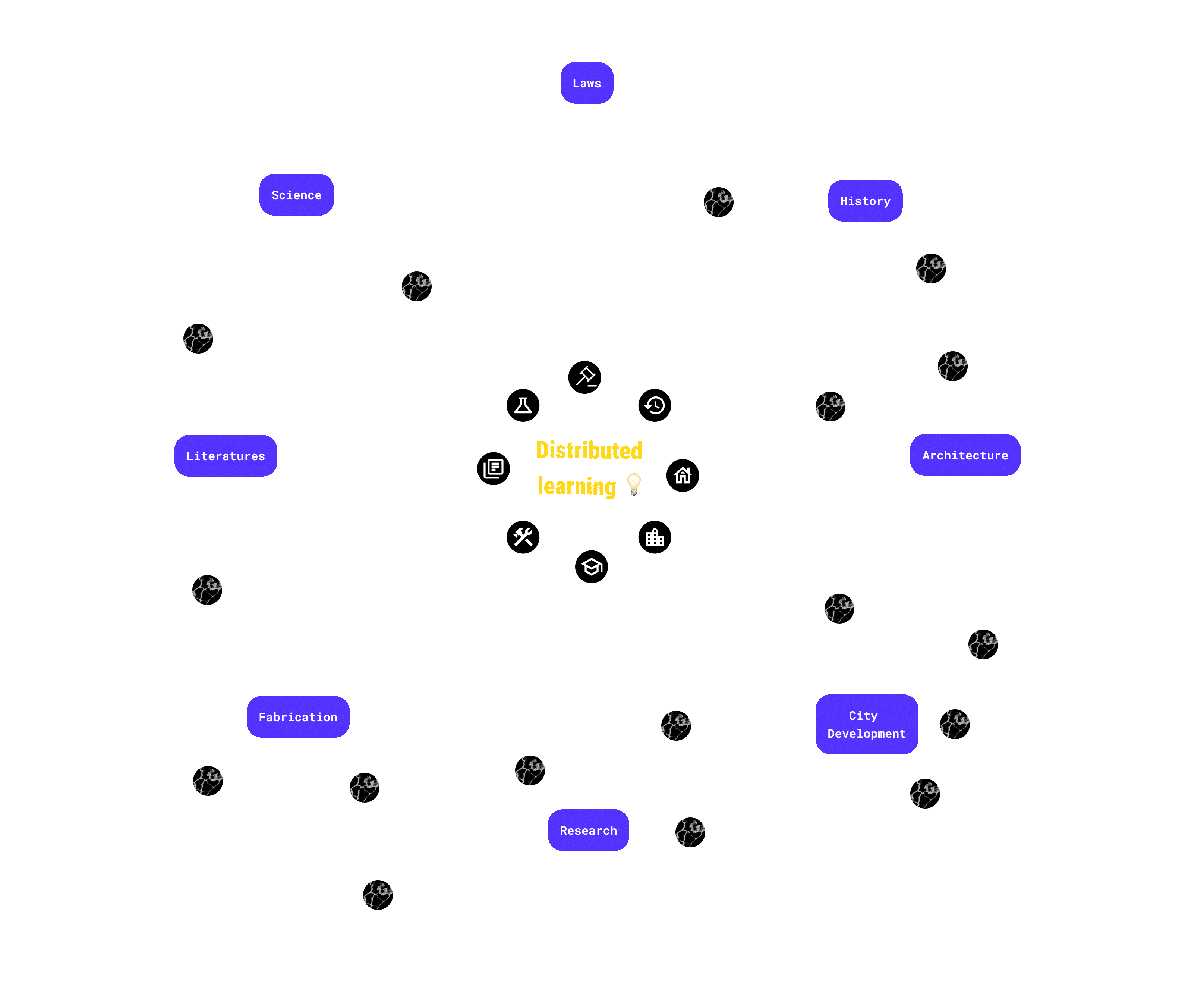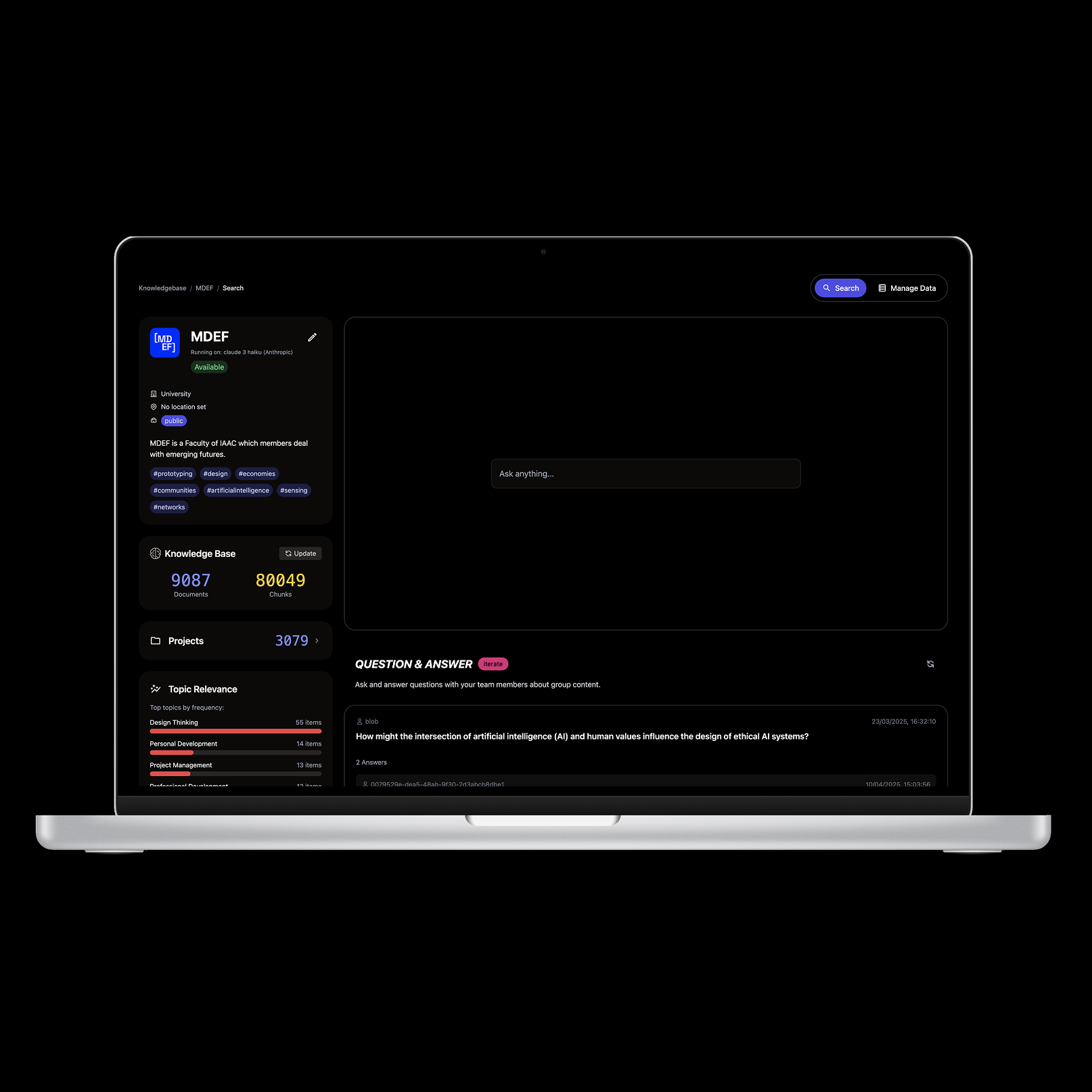BLOB
BLOB is an adaptable network platform inspired by Physarum Polycephalum, where multiple local community intelligences connect and share data in harmony. With a testing phase underway, we're exploring how this model can be applied to various settings, from maker labs to businesses and schools, with the aim of creating a broader-scale platform for collaboration and innovation.
Collaborators

Tim Colishaw
Mentor & Advisor

IAAC
Hosting Institution

Fablab
Testing Community

MDEF Students
Testing Community
Vision
Imagine a world where anyone can create, learn, and grow their own AI solutions. We want to make it easy for people to build simple search engines and language models using our platform, which will help democratize access to AI technology. By giving people control over their data and creations, we believe that BLOB will unlock new possibilities for innovation and problem-solving.
Our vision is to create a digital ecosystem where local community intelligences connect and collaborate, sharing data resources while maintaining their individual autonomy and ownership. This decentralized approach challenges conventional centralized data platforms.
By enabling communities to maintain their own data while participating in a larger network, BLOB fosters a more equitable data economy where value flows back to those who generate it, rather than being extracted by platform intermediaries.
Key Principles
Reuse
By integrating ollama, standard household computers with little to no graphics power can be reused and the energy consumption can be shared.
Data Ownership
local usability can enable the use of private data, allowing each user to co-decide which data is trained and which is not and what is shared with the system.
Community Governance
Power should be distributed, not centralized. We build tools that allow communities to govern themselves, set their own rules, and determine what matters most to them without relying on central authorities.
Transparent Technology
AI shouldn't be a black box that simply gives answers without explaining where the information comes from. Users should know how decisions are made and have the opportunity to influence these processes.
Accessibility
Advanced technology should be accessible to everyone, not just those with technical expertise or extensive resources. we pursue approaches that are intuitive, affordable and can be used by communities of all kinds without coding.
Environmental Responsibility
Durch verteilte Ansätze wird der Bedarf an riesigen Datenzentren und energieintensiver Datenverarbeitung reduziert. Durch die Nutzung lokaler Ressourcen und die Optimierung der Verarbeitung minimiert das System seinen ökologischen Fußabdruck.

Architecture
The BLOB network is designed with a biomimetic architecture that mirrors the distributed intelligence of slime molds. The system follows decentralized principles with components that work both independently and collectively. The architecture follows a biomimetic pattern where each node retains autonomy while contributing to the collective intelligence. Like Physarum, which can optimize resource distribution across its network, BLOB optimizes data flow while maintaining local ownership.

Architectural diagram showing BLOB's distributed node communications
System Architecture
Community Nodes
(Local Data Storage & Processing)Network Layer
(P2P Communication & Data Sharing)Intelligence Layer
(Distributed AI & Knowledge Processing)Interface Layer
(User Interaction & Visualization)Prototype
The current prototype provides a framework for creating, connecting, and managing distributed intelligence nodes. Each node functions as both a data repository and a processing unit, maintaining its own database while connecting to the broader network. The prototype is currently being tested with communities, including IAAC's Fablab and MDEF, with continuous improvements based on user feedback and real-world applications.
Core Components
- Federated network architecture
- Local data ownership system
- Integration with LLM frameworks
- Collaborative workspace tools
- Data transaction tracking
Technologies Used
- Python for RAG integration
- Vector database for knowledge storage
- Node.js for network communication
- Langchain for LLM integration
Insights
Our research and prototyping with BLOB has revealed significant insights about community data ownership, network intelligence, and the potential for more equitable digital ecosystems. These insights guide our ongoing development and future directions.
"BLOB represents a paradigm shift in how communities can own, share, and benefit from their collective data and knowledge—moving away from extraction and toward mutually beneficial collaboration."
"BLOB represents a paradigm shift in how communities can own, share, and benefit from their collective data and knowledge—moving away from extraction and toward mutually beneficial collaboration."
"BLOB represents a paradigm shift in how communities can own, share, and benefit from their collective data and knowledge—moving away from extraction and toward mutually beneficial collaboration."
Current Development
Latest progress and implementation

The BLOB network visualization interface showing connected community nodes